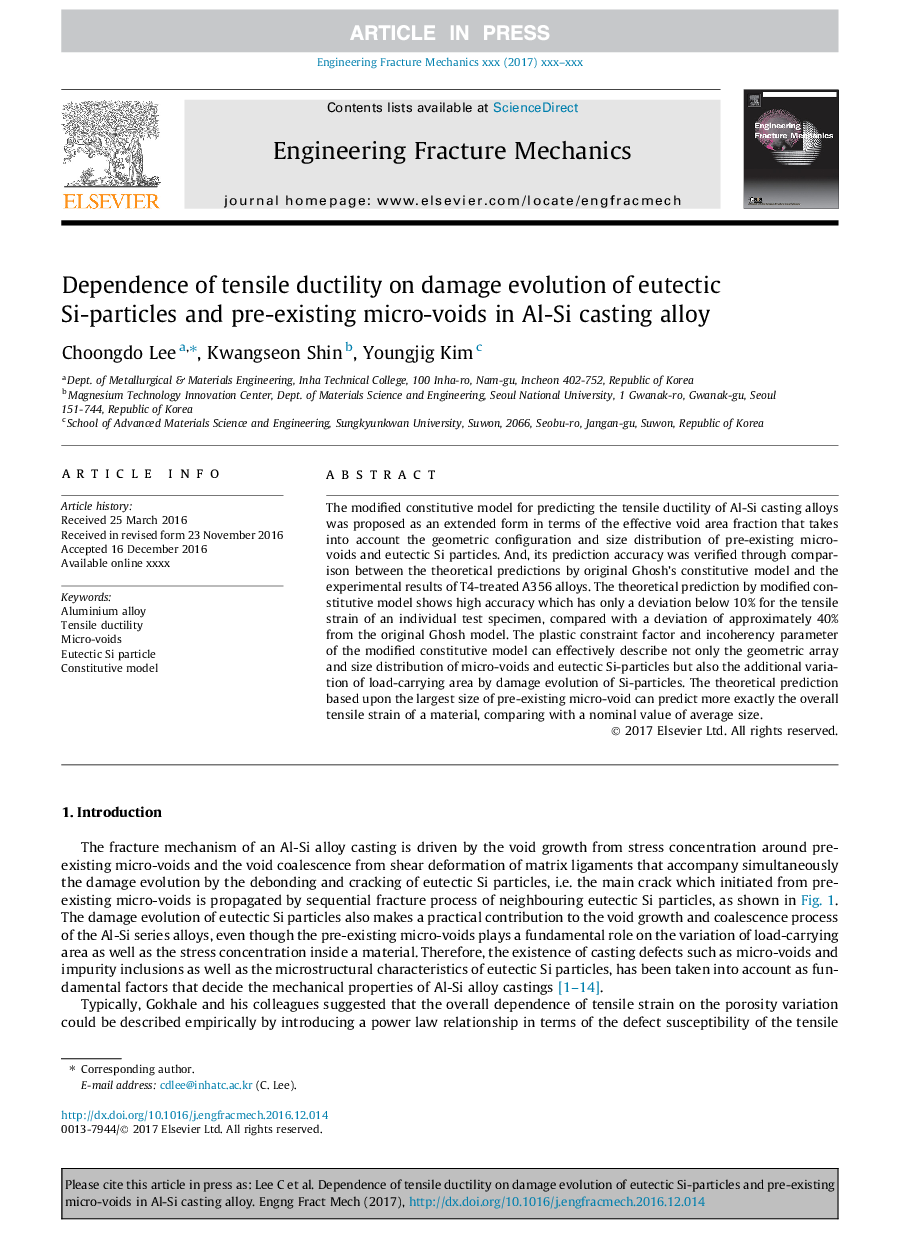| Article ID | Journal | Published Year | Pages | File Type |
|---|---|---|---|---|
| 5014008 | Engineering Fracture Mechanics | 2017 | 18 Pages |
Abstract
The modified constitutive model for predicting the tensile ductility of Al-Si casting alloys was proposed as an extended form in terms of the effective void area fraction that takes into account the geometric configuration and size distribution of pre-existing micro-voids and eutectic Si particles. And, its prediction accuracy was verified through comparison between the theoretical predictions by original Ghosh's constitutive model and the experimental results of T4-treated A356 alloys. The theoretical prediction by modified constitutive model shows high accuracy which has only a deviation below 10% for the tensile strain of an individual test specimen, compared with a deviation of approximately 40% from the original Ghosh model. The plastic constraint factor and incoherency parameter of the modified constitutive model can effectively describe not only the geometric array and size distribution of micro-voids and eutectic Si-particles but also the additional variation of load-carrying area by damage evolution of Si-particles. The theoretical prediction based upon the largest size of pre-existing micro-void can predict more exactly the overall tensile strain of a material, comparing with a nominal value of average size.
Related Topics
Physical Sciences and Engineering
Engineering
Mechanical Engineering
Authors
Choongdo Lee, Kwangseon Shin, Youngjig Kim,
